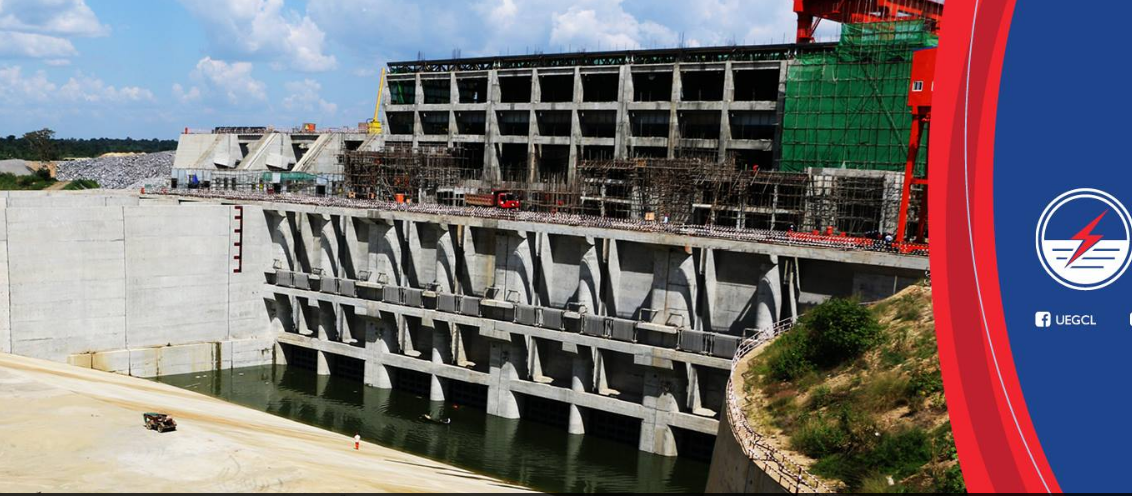On different occasions, Dr.Eng Harrison Mutikanga, UEGCL chief executive officer, has been assuring Ugandans that the company is ready to deliver the 920MW in the next five years.
The debate on UEGCL’s priorities started appearing when revenues were growing. This is as a result of growing its asset base to UEGCL’s total assets as at June 30, 2017, were at 3.2 trillion Shillings up from one trillion Shillings in 2015, as released by UEGCL board chair, Eng. Proscovia Margaret Njuki in audited Financial Statements for the 18 months ended 30th June 2017. The books show good financial and operational health which TheUgandan understands, this translates to to about 3 per cent of Uganda’s Gross Domestic Product.

“UEGCL is one of the top performing parastatals and I salute them for a job well done,” said finance minister David Bahati (planning) flanked by his Investment compatriot Evelyn Anite as well as the Secretary to the Treasury, Keith Muhakanizi.
UEGCL had growth as evidenced majorly by the company’s management of Karuma, Isimba, Muzizi and Nygak III hydro power projects alongside concession monitoring though an assignment agreement with Eskom granting it the right and obligation to operate and maintain Nalubaale and Kiira dams, audits at the dam complex in Jinja show instances of non-compliance by Eskom, a South African power company running both dams.
It is important to note that Karuma and Isimba dams were progressing albeit with problems which would be rectified. Mr. Mutikanga said the company was in the process of acquiring contract administration powers to enable it more effectively supervise the projects. They have requested Finance Ministry Permanent Secretary Keith Muhakanizi to provide Shs13 billion for contracting a new Owner’s Engineer for the two hydro power projects in Kiryandongo and Karuma districts after Infratech PvT Limited that is based in India was in June this year fired from supervising both dams following alleged fictitious reporting in their cash claims and fraudulent receipting.
Mr Mutikanga, who has now marked three years as CEO of the power generator, said the increased growth was “way above our target.”
He said this was a result of a “restructured company to deliver its strategy”.
“We are on course to deliver 920MW in the next 5 years, which will comprise a generation mix of hydro, solar and geothermal,” Mr. Mutikaga said about the company’s future as they focus on among others operational excellence, stakeholder and reputation management, sustainable growth, engaged workforce and safety excellence.
This year, the economy slowed down, interest rates increased while the Shilling weakened, unfortunately, UEGCL performance did not manage to defy this trend with dropping income. Books shew that the company’s revenue dropped to 17.5 billion Shillings from 54 billion Shillings largely on account of the write off a 30-billion-Shillings debt from Uganda Electricity Transmission Company and a write back of 42 billion Shillings.
In a recent interview, UEGCL corporate affairs manager Simon Kasyate said once Karuma and Isimba power projects are complete, government power tariffs will significantly reduce. “Government plans to prioritise meeting Uganda’s domestic and industrial electricity demands when the Karuma and Isimbapower plants get operational, the reduction will allow them save as profits the money they now use in paying extra bills for electricity,” said Mr Kasyate.
Once Karuma Hydropower plant’s is completed, electricity will cost $0.0497 (Shs179.5) per unit for the first 10 years after commissioning.
The tariff will then drop from $0.0497 (Shs179.5) to $0.0297 (Shs97.5) during the 11th through the 15th year. From the 16th to the 38th year it will drop to $0.0117 (Shs42.2).
On the other hand, Isimba Hydropower plant’s generation tariff during the first 15 years will be $0.0416 (Shs150.2) and $0.0101 (Shs36.4) after the fifteenth year. These tariffs are what the UEGCL will charge the Uganda Electricity Transmission Company Limited (UETCL) for every unit.
End–user tariffs are arrived at by factoring in the reasonably incurred generation costs, transmission costs, distribution costs divided by the total number of units of power generated, multiplied by one, minus the target energy loss.
The government last approved the increment of power tariffs by 11 per cent in December 2016.
The increment saw households and kiosk owners pay Shs696.9, up from Shs623.6 for each unit above the first 15. In other words the rate for each of the first 15 units remains unchanged at Shs150.












